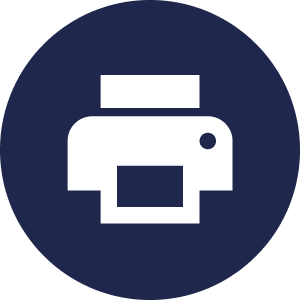LiDAR - A Boon For Assessors
For assessors, whose primary goal is to accurately, objectively, and equitably value the physical world, light detection and ranging (LiDAR) technology is a boon. A simple walk around a building collects millions of precise measurements that, together, build an accurate 3D model of a building. This 3D model is useful to assessors and to other local government departments, positioning the assessor as both a valuation specialist and a data broker.
Unfortunately, many assessors haven’t even heard of LiDAR, so a brief overview of the technology and its application to assessing will help demonstrate how assessors can improve their property data and streamline their data collection efforts using a LiDAR system.
What Is LiDAR and How Does It Work?
A LiDAR system, at its most basic, consists of a laser, a clock, and position sensor. The laser emits light pulses, the clock measures the amount of time the light pulse takes to reflect off the surface of an object, and the position sensor records the angle at which light was emitted and the location of the laser in space relative to the earth. Because the speed of light is known, the distance the light traveled from laser to the object can be calculated using the time recorded from the clock. The location of where the reflection occurred can be calculated using data from the position sensor. The result? A point in space. Perform this sequence thousands of times a second, like the LiDARs that CIDARE uses, and you get a dense, high-resolution 3D model of the world, made up of millions of measurements, called a point cloud.

There are several varieties of LiDAR - aerial, terrestrial, mobile, man-carriable - and each type has its benefits and its disadvantages. While CIDARE is familiar with all kinds of LiDAR, we use man-carriable LiDARs in the field. These systems are highly mobile and collect data quickly. In general, we can scan the exterior of a house in two to three minutes. Commercial buildings take slightly longer, generally ten to fifteen minutes. The largest building we’ve ever captured was 1.3 million square feet (across multiple stories) and consisted of offices, a manufacturing area, and a warehouse area. It took us three hours to scan and capture the entire outside and inside of the building. An architect who had tried to measure the building by hand previously had spent two weeks.

What’s So Special About a LiDAR Point Cloud?
Accuracy and Precision
Besides the fact that LiDAR data can be collected quickly, which is essential to assessing when you’re in the field and can’t waste time, it is also accurate and precise. By accuracy we mean how close data reflects reality; by precision we mean how repeatable the data would be if gathered multiple times. Assessors care about accuracy because square footage can directly impact a valuation (in the case of a cost valuation) or can impact how a property is compared in a market analysis. Precision translates into narrower ranges and easier to defend values.
IAAO standards recommend that measurements be accurate to +/- 1 foot of a buildings true dimensions or that area calculations be within 5% of the true area. The lowest resolution LiDARs that CIDARE uses are accurate to +/- 2 inches and the highest resolution LiDARs we use are accurate to +/- .2 inches.
A simple example illustrates the difference between all three accuracy ranges. Imagine a 20 x 20 ranch style home in Boston is being valued, where the current price per square foot is $588 as of September 9th, 2022. Using ranges and this price per square foot, we can get an imperfect sense of how accuracy ranges impact value.

As illustrated above, differing accuracy standards impact the calculation of a property's value, sometimes with a broad range in the difference in value. When applied to an entire jurisdiction, less accurate measurements translate to:
property owners paying too little or too much tax;
local governments underestimating or overestimating the tax rate required for a given year;
the potential for more abatements and more appeals.
Precision is important to defensibility. Walk a LiDAR around or through the same building 100 times, and you'll come up with the same values, within the accuracy range, each time, making it difficult for people to dispute the measurements.
So the accuracy and precision of LiDAR data are major benefits that impact indispensable data valuation depends on.
A Treasure Trove of Information
Another clear benefit of a LiDAR point cloud is that it captures multiple types of information. With minimal processing you can extract the following information:
The path traveled by the data collector to capture the data;
Accurate, precise dimensions of the building you’ve scanned;
The precise location of the building’s features.

With more intense processing, one can extract:
Survey quality 2D drawings;
Architectural quality 3D models;
The physical condition of the exterior of the item scanned;
A 3D image of the object scanned.
Said another way, from one scan the assessor can get information that the assessor, the building department, the economic development department, the fire department, the police department, and the emergency management department can use. When applied to an entire jurisdiction, assessors can produce better valuations while enabling safer neighborhoods, reduced fires, and better municipal or county planning by leveraging the LiDAR data they gather. The versatility of LiDAR data combined with the assessor’s need to ensure that property data is current and accurate offers up a treasure trove of information that a municipality or county can leverage across multiple parts of government.
The Ability to Virtually Visit The Property
Finally, LiDAR data nullifies the need for revisits. By combining LiDAR data with photos, an assessor can easily remeasure a property, identify the key external features, answer questions from property owners, or defend themselves in an appeal. All they have to do is refer to the point cloud and photo data. Measurements can be done in front of the property owner by measuring through the point cloud, while photos provide context and make it easy to identify key features.

Accessing LiDAR Technology
Accessing LiDAR technology is relatively easy.
Large jurisdictions should think about buying their own systems and hiring technicians or training staff on how to use such systems. Leica, Faro, and Emesent are among the best manufacturers of man-carriable LiDARs. A LiDAR system has a high initial cost, both financially and in terms of training time, but a large city or county’s size will enable them to use their LiDAR systems with the frequency required to make the amortized cost of LiDAR feasible. Gathered data can be processed by a firm like CIDARE, which understands how to convert LiDAR data into information products like 2D sketches, 3D models, and condition analysis reports.
Smaller jurisdictions should consider hiring a data collection firm that specializes in providing LiDAR service as part of its offerings. This way, the assessor benefits from the data without having to incur the cost of buying the system and training staff.
Incorporating LiDAR Data Into Your Workflow
For a long time, LiDAR technology has been a key component of military, manufacturing, and robotic applications. Only within the last ten years has the technology advanced enough to make it available to assessors and provide assessors with:
Faster, more efficient field operations;
Accurate, precise data that is objective, trustworthy, and transparent;
A multitude of information types and forms; and
The ability to provide information benefits to other departments within the government.
In a field that is data dependent, the benefits of LiDAR are hard to ignore.

Ready to get in touch?
By
CIDARE
at
CIDARE, Inc.
By
CIDARE
at
CIDARE, Inc.
Updated On:
January 8, 2025 at 1:57:02 PM







